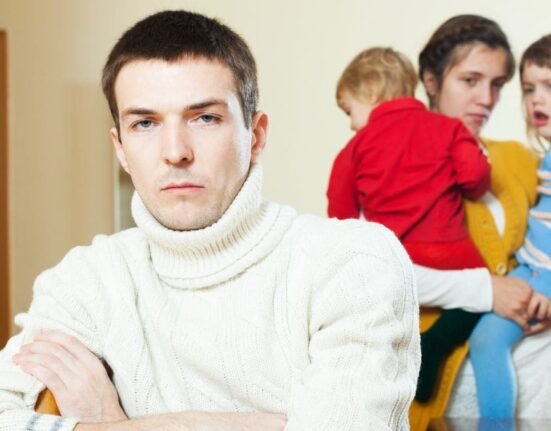The people like our friends or family or any person we wish to be with us are peers. Peer word is derived from the Latin word par which signifies equal. The people who are equal to us are our peers. In simple terms, peers can be any person who is of your age or in the same grade or plays with you, etc. As an individual grows, the individual becomes increasingly independent. The world of that individual is not restricted to family or siblings. As an individual explores the world the person spends more time with their peers. And eventually, there are some peers, we develop a strong bond with, which feels like an extended family (Dhull & Beniwal, 2017).
Peer Pressure
As a person spends more time with their peers, the person learns new things from them without realizing it. A person starts behaving in a certain way their peers are behaving to not feel left out or to be liked by them or respected by them, this behavior is due to peer pressure. For example, a high school student starts drinking and smoking due to peer pressure (Dhull & Beniwal, 2017).
According to Goldsmith, “Peer pressure is stress or strains you feel from friends and schoolmates to act, behave, think, and look a certain way. This kind of pressure can cover everything from fashion through sex and dating” (Dhull & Beniwal, 2017).
There are 4 types of peer pressure i.e.,
- Positive peer pressure
- Negative peer pressure
- Active pressure
- Passive pressure
Positive peer pressure is when a person is encouraging you to initiate good habits into your life. For example, a friend helps you in improving your grades, helps you achieve your goals, etc. Whereas negative peer pressure is when a person forces us to do something wrong. For example, introducing you to drugs, bullying, vandalizing public property, etc. Active pressure is directly offering a drink and criticizing if refused to drink. Passive pressure is when the individual themselves is indulging in drinking to fit in with their fellow peers. Positive peer pressure helps in powerful encouragement towards having healthy habits, and helps us in becoming mature and responsible (Dhull & Beniwal, 2017).
Risk behavior due to peer influences in adolescents:
There is lower resistance toward peer influences in adolescents than in adults. According to the observations made, adolescents indulge more in risk-taking decisions. It is seen that delinquent behavior in adolescents is due to affiliation with delinquent peers. Peer socialization, friendship choices and where risk taking behavior is seen adolescents are naturally attracted to those behaviors (Albert et al., 2013b).
An experimental study was conducted to determine whether there is an effect of age on peer influence on risk-taking behavior. From early adolescents to adults, that is the age range from 14-37 were taken as a sample to conduct the study. The participants were given computerized driving tasks, which was the Chicken Game.

In the participant has to drive a car as far as possible without crashing into the wall which can appear without any warning. The participants were tested with a group of having the same age group peer with them and alone in the study it was observed that early adolescents had high risk-taking behavior when tested with peers than alone. In contrast, around 50% of risk-taking decisions were seen in groups in late adolescents. And the adults had no difference in risk driving, which relates to a social context (Albert et al., 2013b).
Neurodevelopmental Model of Peer Influences on decision making in Adolescents:
A neurodevelopmental model was developed to determine the susceptibility of adolescents toward peer influences. The model proposes that adolescents are more prone to indulge in short-term benefits and make risky decisions than thinking of long-term effects on their life. This is due to the reward-sensitive motivational state. There are three fundamental assumptions to the model which help in staging peer influence studies (Albert et al., 2013b).
- Cognitive and affective input together give a product called the decision, even if the choices under evaluation are unrelated to the effect.
- “Bottom-up” affective reactivity is seen greater in adolescents to socially relevant stimuli than in adults.
- Less capability of “Top down” cognitive control towards impulsive behavior in adolescents than adults.
Identifying Underlying Mechanisms of Peer Influences on decision making in Adolescents:
To specify the neurodevelopmental vulnerability in adolescents who are susceptible to peer influence, a series of behavioral and neuroimaging experiments were conducted. The experiments compared decision-making and social contexts. The experiments sought to examine if there is an association between the presence of biases in adolescent decision-making by
- Modulating the responses to stimulant cues, with the approach of sensitization hypothesis.
- Disarranging inhibitory control.
- Alteration of the processes.
To assess these questions, an experiment was conducted on late adolescents i.e., 18-19 years old. They were assigned a series of tasks to be completed either alone or in a group with a peer of their own age, and sex. The Stoplight game assessed the risk-taking tendency. Stoplight is a first-person driving game in which participants will drive the car and a series of intersections will be added to reach the finish line. This should be done in less time as the participants can and a monetary reward is offered if done so. Every intersection is marked by a stoplight, which will turn yellow or red as the car approaches. The participants can choose either to stop at the stoplight or to run the light. Tasks were also given to determine cognitive control and choice-making for immediate-over-delay rewards (Albert et al., 2013b).
No group differences were seen towards the Go/No-Go index of inhibitory control. Adolescents were seen to take more risks on the Stoplight task in presence of peers. And adolescents who completed the tasks alone preferred immediate-over-delayed rewards (Albert et al., 2013b).













Leave feedback about this